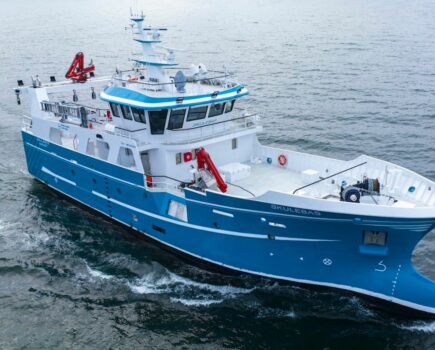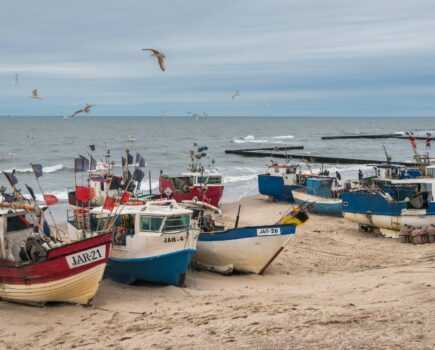This year’s December Council brought a welcome overall package of increases in TACs for several key stocks around the UK and Ireland, reports Tim Oliver.
Two major downsides were more cuts in bass fishing and a big cut (38%) in Celtic Sea cod, although this was much less than the Commission’s proposed 68%.
There was also increased flexibility around where vessels can fish, including the removal of current constraints over fishing for northern shelf haddock.
Among important TAC increases (which include quota uplifts to compensate for discards for landing obligation species) were:
- North Sea: cod and whiting +17%; monkfish + 20%; saithe 53%; hake +12% and prawns +46%
- West of Scotland: Rockall haddock +45%; hake +9%
- Irish Sea: haddock +25%; prawns +8.6%. Porcupine Bank prawns are increased +68%
- Western Channel: haddock +7%; sole +20%
- VIIb-k whiting +21%
On the downside, North Sea haddock is down 46%, reversing a previous scientific error, and West of Scotland haddock is down 47%.
Channel plaice (VIId,e) is down -19% and Eastern Channel sole down -15%. Area VII megrim is down -25%.
On the pelagic front, western mackerel is up +14% but North Sea herring is down -7% and West of Scotland herring is again a zero TAC with only a scientific quota for research work.
The overall good package seemed to indicate that Britain’s looming departure from the EU/CFP did not affect the country’s negotiating capacity as there had been speculation it might. Scottish minister Fergus Ewing said: “In these uncertain times I’m pleased that issues around Brexit did not compromise our negotiating position.”
UK fisheries minister George Eustice said the UK had lobbied against unnecessary cuts proposed by the Commission where the scientific evidence supported opposition. This had secured the same quota as last year for many species, including Irish Sea cod and sole, Celtic Sea monkfish and West of Scotland whiting and increases on some valuable species as stocks had recovered, especially in the North Sea.
“There have been some challenges, especially on stocks like bass and cod in the South West, where action to curtail catches has been necessary, but we have worked hard to secure an agreement striking the right balance that delivers for both our marine environment and coastal communities,” said the minister.
“As we prepare to leave the European Union we have an opportunity to build on progress made, and improve the management of fish stocks in our waters, but we will continue to follow the principles of fishing sustainably and ending the wasteful practice of discarding fish.”
Scottish fisheries secretary Fergus Ewing said increased quotas for 16 out of 23 key Scottish stocks such as cod, saithe and mackerel would be worth around £47m to the Scottish industry. Increases in prawns and monkfish are worth about £12m and £5m respectively.
He said: “To achieve improved deals for 16 out of 23 of our key stocks is a very satisfactory outcome for the Scottish fleet and one that’s been strongly welcomed by the senior industry representatives in Brussels.
“I’m delighted that our long-standing calls to give vessels greater flexibility around where they can fish have been answered, and from 2017 our fleet will be able to make use of this new provision.”
EU hell bent on MSY
The European Commission said one of the ‘fundamental objectives’ of the reformed CFP was that stocks are to be fished at MSY by 2020 at the latest. In 2009, only five stocks had TACs set at MSY but the Council agreement will bring 44 stocks to MSY levels, compared with 36 last year.
EU fisheries commissioner Karmenu Vella said the Commission’s policy on MSY was one of ‘measured consistency’. The goal was ‘year-on-year’ steps towards the 2020 targets. “That is why we must still take the hard decisions where there is real concern,” said Karmenu Vella.
The Commission had put forward ‘bold proposals’ for a number of stocks and even though the final Council compromise ‘does not reach the same level of ambition, it still makes considerable progress towards more sustainable management of our fisheries’. The Council result was another important step towards this ‘core objective of the CFP’.
He said the push for healthy stocks was paying off, ‘following years of disciplined fisheries policy’, and showed that sustainability gets fishermen the best deal.
“Evidence indicates that effective conservation policies and economic profitability go hand in hand. The economic performance of the EU fleet has improved considerably, from a loss-making position in 2008 to generating increasingly higher net profits in the past three years,” said the commissioner.
“This increased profitability is very much driven by the increase in the amount of stocks being fished sustainably. The faster the transition to MSY, the higher the long-term benefits.”
Bass by-catch eased
Bass will be continue to be subject to tight restrictions in 2017 following the Fisheries Council, but there were some gains over the Commission’s original proposals.
The fishery will again be closed during February and March, as it was this year, and drift netting and pair-trawling for bass are again banned.
But the by-catch for demersal trawlers and seiners will be increased to 3% from this year’s 1%, but with a 400kg per month limit.
The proposal to ban gill netting for bass was headed off, with a 250kg a month by-catch agreed.
Hook and line commercial fishermen will have a 10t a year catch limit.
Recreational angling for bass will banned during February and March and will be limited to a one fish per day bag limit for the rest of the year.
NFFO chief executive Barrie Deas said: “The Council has introduced some flexibility in the trawl fishery that should help a bit in 2017 by increasing the by-catch allowance to 3% from this year’s 1%. Keeping a provision for an – albeit heavily restricted – gill net fishery was important too.
“The Commission’s ridiculous proposal to give recreational anglers an unenforcable 10 fish per month bag limit was quite rightly bounced out of court by the member states.”
Read more news from Fishing News here.








